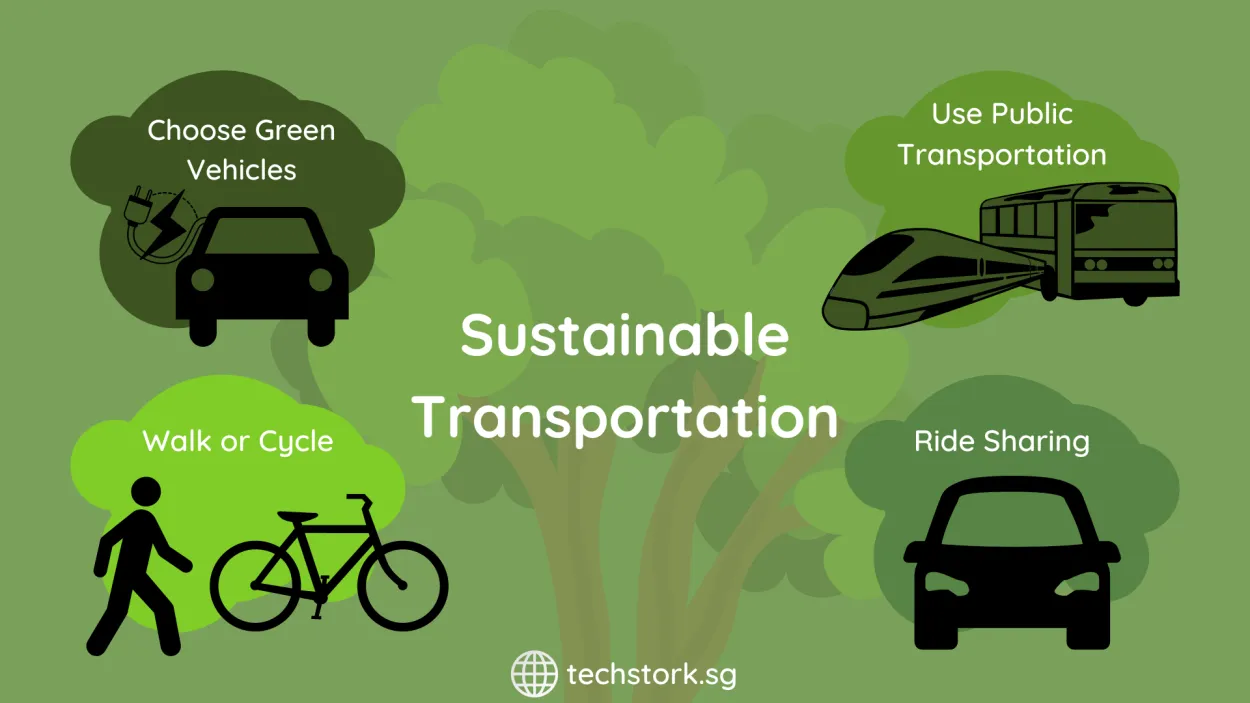Making sustainable travel choices is becoming increasingly important as we strive to protect our planet. This article explores eco-friendly practices and gear that can help reduce our carbon footprint while enjoying our adventures.
Principles of Sustainable Tourism

In order to make sustainable travel choices and promote eco-friendly practices and gear, it is important to understand the principles of sustainable tourism. These principles serve as guidelines to ensure tourism activities have a positive impact on the environment, local communities, and cultural heritage. By abiding by these principles, travelers can contribute to a more sustainable and responsible tourism industry.
1. Environmental Responsibility
Sustainable tourism encourages travelers to minimize their negative impacts on the environment. This can be achieved through practices such as reducing waste and carbon emissions, conserving water and energy, and respecting wildlife and natural habitats.
2. Socio-cultural Sensitivity
Travelers should respect local cultures, customs, and traditions. It is important to engage with local communities in a respectful manner, support local businesses, and learn about the cultural heritage of the destination.
3. Economic Benefits
Sustainable tourism aims to maximize economic benefits for local communities. Travelers can support the local economy by purchasing local products and services, staying at locally owned accommodations, and participating in community-based tourism initiatives.
4. Community Involvement
Engaging and involving local communities in tourism decision-making processes is crucial for sustainable tourism. This ensures that the benefits of tourism are shared and that the local community has a say in the development and management of tourism activities.
5. Conservation and Preservation
Sustainable travel choices prioritize the conservation and preservation of natural and cultural resources. It is important to protect fragile ecosystems, archaeological sites, and historical landmarks to maintain their integrity for future generations.
In conclusion, adhering to the principles of sustainable tourism is essential for making eco-friendly travel choices. By being environmentally responsible, respecting socio-cultural aspects, supporting local economies, involving communities, and promoting conservation, travelers can contribute to the preservation of our planet and create positive impacts on the destinations they visit.
Choosing Low-Impact Travel Gear
When it comes to sustainable travel, every aspect counts – including the gear we choose to bring along. Opting for low-impact travel gear not only reduces our ecological footprint but also supports sustainable practices. Here are some key points to consider when selecting eco-friendly travel gear:
Eco-Friendly Materials
Look for travel gear made from sustainable materials such as recycled polyester, organic cotton, bamboo, or cork. These materials require less energy and resources during production, helping to minimize environmental impact. Additionally, they often possess attributes like durability and biodegradability.
Multi-Purpose Items
Choosing multi-purpose travel gear helps reduce the number of items you need to carry and limits unnecessary resource consumption. Look for items that can serve multiple functions, such as a jacket that doubles as a backpack or a scarf that can convert into a beach blanket.
Compact and Lightweight
Opting for compact and lightweight travel gear not only makes packing easier but also minimizes the energy required for transportation. Lightweight gear also reduces strain on your body during travel, making your journey more enjoyable and sustainable.
Quality and Longevity
Investing in high-quality travel gear may cost a bit more upfront but pays off in the long run. Durable items not only last longer but also reduce the need for frequent replacements. By choosing gear that lasts, you contribute to reducing waste and minimizing your environmental impact.
Production Ethics
Consider the production processes and ethics of the brands you choose. Look for companies that prioritize fair labor practices, minimize waste during production, and support local communities. Supporting ethical brands encourages responsible and sustainable manufacturing practices.
By consciously selecting low-impact travel gear, you play a role in promoting sustainable travel practices and reducing your environmental footprint. Each decision you make contributes to a more eco-friendly and responsible approach to traveling.
Eco-Friendly Transportation Options
When it comes to making sustainable travel choices, opting for eco-friendly transportation is an essential step. Not only does it reduce our carbon footprint, but it also contributes to a cleaner and healthier environment. Here are some eco-friendly transportation options to consider:
1. Public Transportation
Utilizing public transportation systems such as buses, trains, and trams is a great way to reduce individual carbon emissions. These systems are designed to accommodate a large number of passengers, resulting in fewer vehicles on the road and decreased traffic congestion.
2. Cycling
Choosing to cycle instead of driving a car not only reduces emissions but also promotes physical activity. Many cities offer dedicated bike lanes and cycle-friendly infrastructure, making it easier and safer to commute on two wheels.
3. Electric Vehicles
Electric vehicles (EVs) have become increasingly popular due to their low emissions and improved efficiency. By eliminating the need for fossil fuels, EVs help combat air pollution and contribute to a greener transportation system.
4. Carpooling
Carpooling is an excellent option for reducing vehicle emissions and sharing transportation costs. By sharing rides with others who have similar routes or destinations, we can significantly decrease the number of cars on the road.
5. Walking
For short distances, walking is the most eco-friendly mode of transportation. It requires no energy other than our own, and it helps improve our overall fitness levels. Walking also allows us to connect with our surroundings on a more personal level.
By adopting these eco-friendly transportation options, we contribute to a more sustainable future while enjoying the benefits of cleaner air and reduced traffic congestion. Making conscious choices about how we travel is an important step in minimizing our impact on the environment.
Supporting Green Accommodations
In the pursuit of making sustainable travel choices, one important aspect to consider is the type of accommodation we choose. Supporting green accommodations not only contributes to reducing our environmental impact but also helps to promote eco-friendly practices and initiatives within the tourism industry.
Benefits of Choosing Green Accommodations
1. Reduced carbon footprint: Green accommodations prioritize energy and water conservation, waste management, and utilize renewable energy sources. By staying in these establishments, travelers can significantly reduce their carbon footprint.
2. Supporting local communities: Many green accommodations are locally owned and operated, which means that choosing to stay at these establishments directly supports local economies and communities.
3. Conservation of natural resources: Green accommodations often implement practices such as rainwater harvesting, wastewater treatment, and native landscaping to minimize their impact on local ecosystems and protect natural resources.
Features of Green Accommodations
1. Energy-efficient systems: Green accommodations utilize energy-saving technologies for lighting, heating, and cooling to minimize energy consumption.
2. Waste reduction and recycling programs: These accommodations have well-established recycling initiatives and aim to minimize waste through composting, using biodegradable products, and promoting responsible consumption.
3. Eco-friendly amenities: From toiletries to cleaning products, green accommodations use environmentally friendly and non-toxic options to minimize harm to ecosystems and human health.
How to Identify Green Accommodations
1. Look for eco-certifications: Many green accommodations are certified by reputable organizations, such as LEED (Leadership in Energy and Environmental Design) or Green Key, which assess sustainability practices.
2. Check for green initiatives: Research the accommodation’s website or contact them directly to inquire about their sustainability efforts, including energy-saving measures, waste management, and community involvement.
Conclusion
By choosing green accommodations, travelers have the opportunity to make a positive impact on the environment, support local communities, and contribute to a more sustainable tourism industry. So, next time you plan a trip, consider staying at a green accommodation and be a part of the eco-friendly travel movement.
Responsible Wildlife Tourism
When it comes to making sustainable travel choices, responsible wildlife tourism is an essential aspect to consider. It involves engaging in activities that prioritize the well-being and conservation of wildlife, while minimizing any negative impact on their natural habitats.
One of the key principles of responsible wildlife tourism is to choose ethical and reputable tour operators or organizations. These organizations prioritize the welfare and protection of wildlife, ensuring that any interactions or activities are carried out in a responsible and respectful manner.
Additionally, it is important to opt for wildlife experiences that focus on observation rather than exploitation. This means avoiding activities that involve direct contact or disturbance to animals, such as riding elephants or taking selfies with captive wildlife.
By supporting initiatives that contribute to wildlife conservation, tourists can actively participate in responsible wildlife tourism. These initiatives may include funding conservation projects, supporting local communities involved in wildlife conservation efforts, or simply spreading awareness about the importance of protecting wildlife and their habitats.
Remember, responsible wildlife tourism is not just about enjoying the beauty of wildlife, but also taking steps to ensure their well-being and long-term survival. By making sustainable travel choices and adopting eco-friendly practices, we can contribute to the preservation of wildlife for future generations to experience and appreciate.
Promoting Cultural and Environmental Awareness
In today’s world, making sustainable travel choices has become increasingly important. Not only does it contribute to the preservation of the environment, but it also plays a crucial role in promoting cultural awareness. By adopting eco-friendly practices and gear, travelers can have a positive impact on the destinations they visit.
Eco-Friendly Practices
When it comes to sustainable travel, there are several eco-friendly practices that can be adopted. One of them is minimizing carbon emissions by choosing alternative modes of transportation, such as cycling or using public transportation whenever possible. Additionally, opting for accommodations that prioritize eco-friendly initiatives, such as energy-efficient systems and waste management strategies, can make a significant difference.
Another essential aspect of eco-friendly travel is respecting local cultures and traditions. Travelers should familiarize themselves with the customs, norms, and etiquette of the places they visit. By doing so, they can ensure that their actions do not disrespect or exploit local communities.
Eco-Friendly Gear
Travelers can also make sustainable choices when it comes to the gear they use. Investing in reusable water bottles, eco-friendly toiletries, and biodegradable products can help reduce waste and minimize the ecological footprint. Choosing sustainable outdoor gear made from recycled materials is another excellent option.
Cultural Exchange
Aside from the environmental benefits, sustainable travel promotes cultural exchange and understanding. Engaging with local communities, supporting local businesses, and participating in cultural activities allows travelers to develop a deeper appreciation for different cultures.
By taking on the responsibility to promote cultural and environmental awareness through sustainable travel, individuals can contribute to a more sustainable future while creating meaningful connections with the world around them.
Conclusion
In conclusion, making sustainable travel choices by implementing eco-friendly practices and using sustainable gear is crucial for preserving the environment. By reducing our carbon footprint, choosing eco-friendly modes of transportation, supporting local communities, and using eco-friendly products, we can contribute to a more sustainable and responsible tourism industry.



